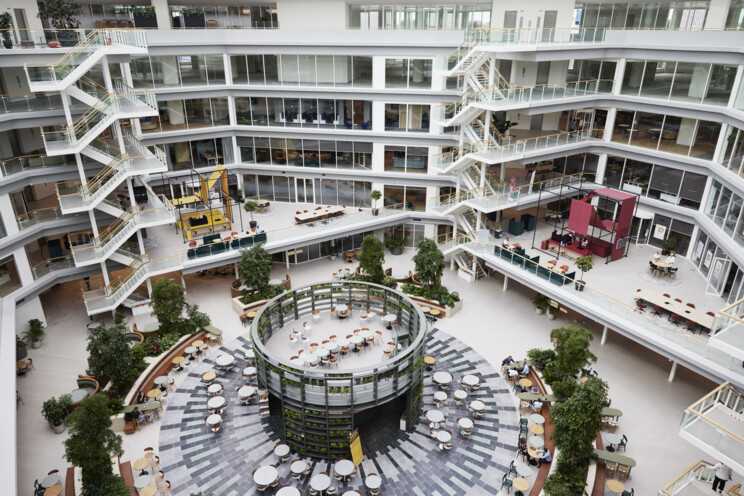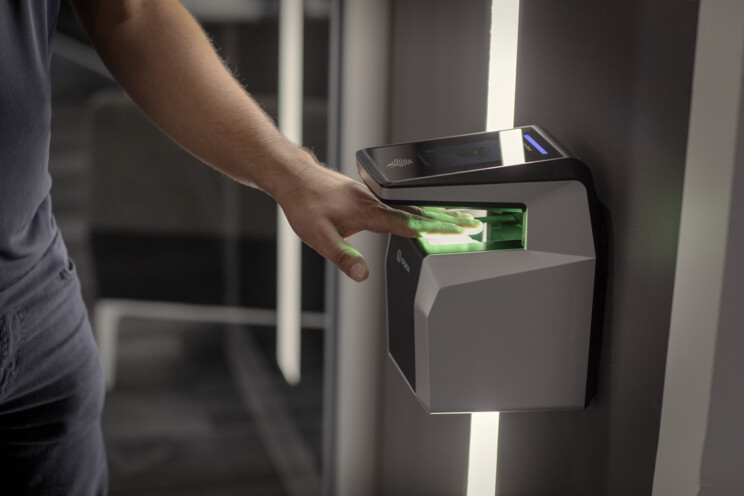As demand for digital services skyrockets – driven largely by advancements in artificial intelligence (AI), streaming, virtual reality, blockchain, and more – data centers are under more pressure than ever to maintain uninterrupted, secure operations on a massive scale.
Unquestionably, data centers play an increasingly important role in our modern lives, which is why countries across the globe have begun recognizing them as critical infrastructure, a trend that will no doubt continue through 2025.
But when it comes to safeguarding this critical industry, most attention is placed on cybersecurity, and understandably so. Yet, physical security also plays a big part in keeping data centers safe and digital services online.
As the security industry continues to serve this booming sector, five key trends are emerging that will shape how data center security evolves throughout 2025. These trends address the growing complexity of securing massive, high-stakes facilities, the balance of growth with sustainability, and the increasing collaboration between technology, people, and partners to ensure resilience in a modern world that demands seamless – and secure – interconnectivity.
1. Modern data center villages pose new security challenges
Today’s data centers are nothing like the isolated facilities that were built in the past, and for good reason. Simply put, we need more data centers to keep pace with rising demand, which means an increase in the sheer scale, quantity, and sophistication of this infrastructure.
Some estimates project that data center demand will rise 19-22 percent annually until 2030, but others suggest we could see demand rising by as much as 27 percent. The latter could result in annual demand for data center capacity reaching 298 gigawatts (GW), a stark contrast to the current demand of 60 GW.
The U.S. is expected to drive much of this growth, with demand in 2024 of 25 GW expected to rise to more than 80 GW – or roughly 27% of the global demand – in 2030. At this rate, and even at the more conservative rates, we face a significant supply deficit.
So, to account for this, what we’re beginning to see is the rise of vast, village-like networks, with 10-15 data centers being developed simultaneously. As a result, the requirements to support these large projects moving forward are shifting significantly.
With greater scale and complexity, data centers will need more comprehensive and robust security programs in place. While security may have been managed by a handful of officers and a few exterior barriers in the past, the future of data center security lies in its role as an integral part of operations and service continuity, seamlessly embedded into every layer of the facility’s infrastructure.
However, one pressing challenge stands out: labor. In their existing capacity, the security officers needed to staff these massive communities would rival what’s required to secure small cities. Like many industries, data centers face a growing labor shortage. But the solution isn’t simply to replace all humans with technology. In fact, humans are becoming even more essential to the industry. Rather, the answer lies in deepened specialization, paired with strategic digitalization.
2. A new type of security officer is emerging
Tightened labor availability, rising costs, and increased data center complexity have heightened the need for professionals who are not just present, but highly educated, deeply knowledgeable, and exceptionally effective. As such, the role of the security officer has shifted.
Now we’re seeing the emergence of data center security professionals who are specially trained to operate in these unique environments. Whereas multiple officers may have been needed to perform security tasks in the past, a single, highly trained officer equipped with – and accompanied by – the right technology can now accomplish those tasks and more.
This trend brings enhanced security, cost efficiencies, and added value to data centers. Importantly, it’s also contributing positively to the security industry as a whole, as it’s creating a more attractive and rewarding career path for officers – which we hope will have a domino effect when it comes to talent recruitment. Better jobs mean better talent, which results in even better security. Win, win, win.
3. Digitalization and technology power a multi-layer approach
Of course, data center security professionals aren’t working alone. They’re empowered and complemented by security technologies that optimize their routes, enhance their efficiency and effectiveness, and create a balanced, multi-layer approach to data center security.
AI-powered solutions, intelligent video surveillance, and advanced access control solutions (e.g., biometrics and automatic number plate recognition systems ) are some such technologies. Others, including smart sensors, automated screening solutions, and interactive video monitoring combine to form additional layers of security.
All of this has contributed to a shift from traditional data center security to a more proactive approach – one that integrates security throughout the facility or complex, from the perimeter barriers all the way down to the rack level.
At the core of this transformation is digitalization. Data has become one of the most valuable assets in modern security operations, offering insights not only into what has happened but also into what could happen. Predictive analytics, risk intelligence, and sophisticated dashboards equip security professionals with actionable data about their activities and the data center’s security operations, enabling smarter decisions that deliver better outcomes.
4. Sustainability takes center stage for data centers
The rapid rise in global digital demand is placing unprecedented pressure on data centers. While advancements in energy efficiency have helped moderate the overall growth in energy consumption, data centers and data transmission networks still account for a notable share – 1 to 1.5 percent – of global electricity use, according to the International Energy Agency (IEA). This balancing act between demand and sustainability remains one of the industry’s most pressing challenges.
This pressure has brought increased attention to sustainability across the industry, making it a top priority for data centers in 2025 and beyond. Major players are setting ambitious targets to reduce energy consumption, emissions, and resource usage. These efforts – positive in their own right – also create a ripple effect that raises the bar for the entire sector.
Governments and regulatory bodies are playing a key role, too, introducing stricter requirements for energy efficiency, water usage, and emissions reductions as conditions for approving new facilities.
Security providers are increasingly part of these conversations. More and more clients are choosing security partners not just for their operational capabilities but also for their ability to contribute to broader sustainability goals. These discussions no longer center solely on security but instead address the interconnected priorities of security, safety, sustainability, and diversity.
From aligning with sustainability frameworks such as SBTi to integrating energy-conscious technologies and practices into security operations, security providers are finding new ways to add value. The conversation is shifting, and in 2025, we’ll continue to see security and sustainability overlap as essential priorities at the core of data center operations.
5. Data centers embrace co-creation for security programs
As conversations around sustainability continue, another shift is taking place, further deepening the relationship between data centers and security partners.
As we’ve already explored, physical security was once viewed as a commodity – managed through standardized requests for proposals (RFPs), defined primarily by fixed barriers, routine patrols, and isolated solutions. But as data centers grow in scale and complexity, with security officers evolving into specialized professionals and technology driving multi-layered approaches, the need for deeper collaboration and strategic alignment between data centers and security partners has never been clearer.
This emerging shift centers on co-creation: a more collaborative approach where security experts and data center professionals come together early in the planning process. Instead of relying solely on transactional RFP-style engagements, co-creation sessions prioritize dialogue, shared expertise, and tailored solutions. These conversations go beyond just physical security and include safety, sustainability, technology integration, and risk management, creating a more holistic security strategy from the outset.
In many cases, these collaborative sessions lay the groundwork for long-term partnerships, fostering mutual understanding and trust while reducing inefficiencies. Security providers with deep expertise in data center environments – those who understand the unique risks, regulatory requirements, and operational challenges – are increasingly being recognized not just as vendors, but as strategic advisors.
While this shift is still in its early stages, it represents an important evolution in how security is approached across the industry. In 2025, we anticipate more data centers moving away from rigid, transactional models and embracing co-creation as a path to smarter, more effective security programs.





